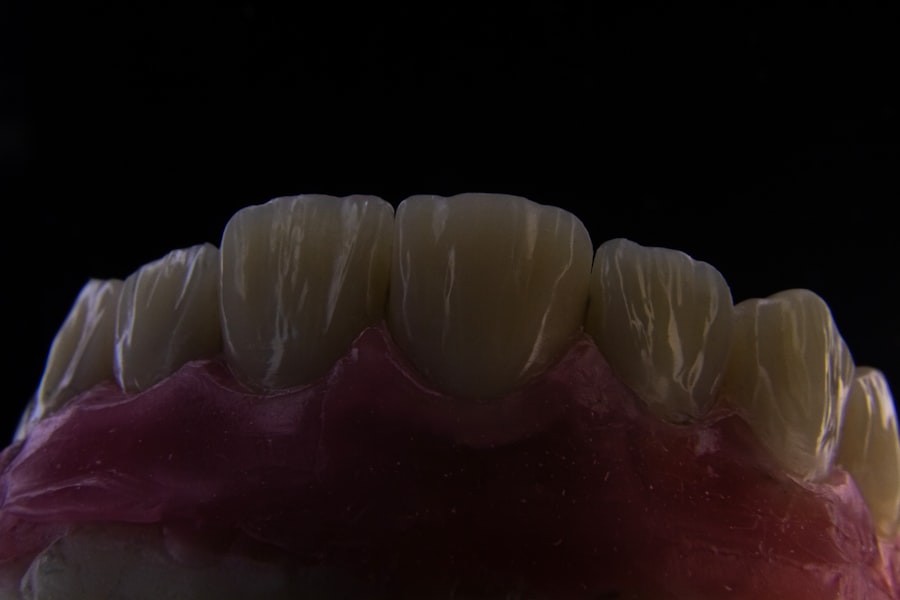Biohacking is a broad and multifaceted concept that encompasses a range of practices aimed at enhancing human biology and optimizing physical and mental performance. At its core, biohacking involves the application of scientific principles and techniques to manipulate biological systems, often with the goal of improving health, longevity, and overall well-being. This can include everything from dietary changes and exercise regimens to more advanced interventions such as genetic modifications and the use of wearable technology.
The term itself evokes a sense of empowerment, suggesting that individuals can take control of their own biology and make informed choices to enhance their lives. The practice of biohacking is not limited to any one demographic; it attracts a diverse group of individuals, including athletes seeking to improve their performance, tech enthusiasts interested in the latest wearable devices, and health-conscious individuals looking for ways to optimize their diets. The underlying philosophy of biohacking is rooted in self-experimentation and a desire for personal improvement.
By leveraging data, technology, and a deeper understanding of human biology, biohackers aim to push the boundaries of what is possible in terms of health and performance. This movement has gained traction in recent years, fueled by advancements in technology and a growing interest in personalized medicine.
Key Takeaways
- Biohacking is the practice of using technology and biology to enhance the body’s performance and function.
- Biohacking has a history dating back to ancient times, but has gained popularity in recent years with advancements in technology.
- Types of biohacking technologies include genetic engineering, wearable devices, and nootropics for cognitive enhancement.
- Biohacking can enhance the body by improving physical performance, cognitive function, and overall health and wellness.
- Risks and ethical considerations of biohacking include potential health risks, privacy concerns, and the need for regulation and oversight.
The History of Biohacking
The Emergence of DIY Biology
The term “biohacking” itself emerged in the early 2000s, popularized by a community of DIY biologists who sought to democratize access to biological research and experimentation. These pioneers believed that anyone could engage in scientific exploration, regardless of formal training or institutional affiliation.
The Expansion of Biohacking Practices
As the movement evolved, it began to encompass a wider array of practices beyond DIY biology. The advent of wearable technology, such as fitness trackers and smartwatches, further propelled the biohacking trend into mainstream consciousness. Individuals began to track their biometrics—such as heart rate, sleep patterns, and activity levels—using these devices, leading to a greater understanding of personal health.
The Power of Community and Interconnectedness
The rise of social media platforms allowed biohackers to share their experiences and findings with a global audience, fostering a sense of community among those interested in self-optimization. This interconnectedness has played a crucial role in shaping the trajectory of biohacking as we know it today.
Types of Biohacking Technologies
Biohacking technologies can be categorized into several distinct types, each with its own unique approach to enhancing human biology. One prominent category is nutritional biohacking, which focuses on optimizing diet and supplementation to improve health outcomes. This can involve experimenting with various dietary protocols, such as ketogenic diets or intermittent fasting, as well as incorporating supplements that claim to enhance cognitive function or physical performance.
Nutritional biohackers often rely on data from blood tests and other biomarkers to tailor their dietary choices to their individual needs. Another significant area within biohacking is the use of wearable technology. Devices like fitness trackers, smartwatches, and continuous glucose monitors allow individuals to collect real-time data about their bodies.
This information can be invaluable for making informed decisions about lifestyle changes and tracking progress over time. For instance, athletes may use heart rate monitors to optimize their training regimens, while individuals managing chronic conditions can leverage continuous glucose monitors to maintain stable blood sugar levels. The integration of technology into personal health management has revolutionized how people approach their well-being, making it more data-driven and personalized than ever before.
How Biohacking Can Enhance the Body
Biohacking offers numerous avenues for enhancing physical and mental performance, often leading to significant improvements in overall health. One of the most notable benefits is the potential for increased energy levels and improved cognitive function. By employing techniques such as nootropics—substances designed to enhance cognitive abilities—biohackers can experience heightened focus, better memory retention, and enhanced creativity.
These cognitive enhancements can be particularly beneficial for individuals in high-pressure environments or those seeking to maximize productivity in their daily lives. In addition to cognitive benefits, biohacking can also lead to improved physical health through targeted exercise regimens and recovery strategies. Many biohackers adopt high-intensity interval training (HIIT) or other innovative workout methods that maximize efficiency while minimizing time spent exercising.
Coupled with proper nutrition and recovery techniques—such as cryotherapy or infrared saunas—these practices can lead to faster recovery times and improved athletic performance. Furthermore, by monitoring key health metrics through wearable devices, individuals can make data-driven adjustments to their routines, ensuring they are always operating at peak performance.
Risks and Ethical Considerations of Biohacking
While biohacking presents exciting opportunities for personal enhancement, it is not without its risks and ethical considerations. One major concern is the potential for unintended consequences resulting from self-experimentation. Individuals who engage in biohacking may not fully understand the implications of certain practices or substances they choose to incorporate into their routines.
For example, the use of unregulated supplements or nootropics can lead to adverse health effects if not properly researched or monitored. Additionally, there is a risk that individuals may become overly reliant on technology or external substances for performance enhancement, potentially neglecting fundamental aspects of health such as sleep and nutrition. Ethical considerations also arise when discussing more advanced forms of biohacking, particularly those involving genetic modification or biotechnological interventions.
The prospect of editing genes or altering biological systems raises questions about consent, equity, and the potential for unintended societal consequences. As these technologies become more accessible, there is a pressing need for ethical guidelines and regulations to ensure that biohacking practices do not exacerbate existing inequalities or lead to unforeseen negative outcomes. Engaging in open discussions about these ethical dilemmas is essential for fostering a responsible approach to biohacking that prioritizes safety and well-being.
Biohacking and the Future of Healthcare
The future of healthcare may be significantly influenced by the principles of biohacking as personalized medicine continues to gain traction. As advancements in genomics and biotechnology unfold, healthcare providers are increasingly able to tailor treatments based on an individual’s unique genetic makeup and lifestyle factors. This shift towards personalized care aligns closely with the ethos of biohacking, which emphasizes self-experimentation and individualized approaches to health optimization.
By integrating biohacking principles into mainstream healthcare practices, patients may have greater agency over their health outcomes. Moreover, the rise of telemedicine and digital health platforms has made it easier for individuals to access information about biohacking techniques and technologies. Patients can now consult with healthcare professionals remotely, allowing for more personalized guidance on implementing biohacking strategies safely and effectively.
This democratization of healthcare knowledge empowers individuals to take charge of their health journeys while fostering collaboration between patients and providers. As biohacking continues to evolve alongside advancements in medical science, it holds the potential to reshape how we approach health management in the future.
The distinction between DIY biohacking and professional biohacking is an important one that reflects varying levels of expertise and resources available to individuals seeking to enhance their biology. DIY biohackers often operate independently or within informal communities, experimenting with various techniques based on personal research and anecdotal evidence. This grassroots approach allows for creativity and innovation but also carries inherent risks due to a lack of oversight or professional guidance.
DIY biohackers may engage in practices such as home genetic testing or self-administering supplements without consulting healthcare professionals. In contrast, professional biohackers typically work within established frameworks that prioritize safety and efficacy. These individuals may include medical professionals, researchers, or trained specialists who utilize evidence-based practices to guide their interventions.
Professional biohackers often have access to advanced technologies and resources that enable them to conduct more sophisticated experiments while adhering to ethical guidelines. Collaborating with professionals can provide a more structured approach to biohacking, ensuring that individuals receive informed guidance tailored to their specific needs while minimizing potential risks associated with self-experimentation.
Getting Started with Biohacking: Tips and Resources
For those interested in embarking on a biohacking journey, there are several tips and resources available to facilitate a safe and effective experience. First and foremost, it is essential to educate oneself about various biohacking techniques and technologies before diving in. Numerous books, podcasts, online courses, and forums are dedicated to exploring different aspects of biohacking—from nutrition and exercise optimization to advanced technologies like genetic testing.
Engaging with reputable sources can help individuals make informed decisions about which practices align with their goals. Additionally, starting small is key when venturing into biohacking. Individuals should consider implementing one or two changes at a time—such as tracking sleep patterns or experimenting with dietary adjustments—before gradually expanding their repertoire of techniques.
This incremental approach allows for better monitoring of results while minimizing overwhelm or potential negative effects from multiple simultaneous changes. Finally, connecting with like-minded individuals through online communities or local meetups can provide valuable support and encouragement throughout the biohacking journey. By leveraging available resources and fostering connections within the biohacking community, individuals can embark on a path toward enhanced health and well-being with confidence.
If you’re interested in how technology can enhance personal capabilities, you might find the article “Biohacking Basics – Using Tech to Enhance the Body” intriguing. For those looking to delve deeper into the technological tools that can aid in biohacking, consider reading about the latest gadgets and devices. A related article that could be beneficial is How to Choose a Laptop for Students, which provides insights into selecting the right technology that can support various tech-driven health and wellness applications, including those used in biohacking. This guide can help you understand what to look for in a laptop that might be used to run software for health monitoring, biofeedback, and more.
FAQs
What is biohacking?
Biohacking is the practice of using technology and science to enhance the body and mind. This can include activities such as using wearable devices to track health metrics, experimenting with nootropics for cognitive enhancement, or even genetic engineering for physical improvements.
What are some common biohacking techniques?
Common biohacking techniques include using wearable fitness trackers to monitor physical activity and sleep patterns, experimenting with nootropics or smart drugs to enhance cognitive function, and using genetic testing to optimize diet and exercise plans.
Is biohacking safe?
The safety of biohacking techniques can vary depending on the specific method being used. It is important to thoroughly research and understand any biohacking technique before trying it, and to consult with a healthcare professional if there are any concerns about safety.
What are the potential benefits of biohacking?
Potential benefits of biohacking include improved physical fitness, enhanced cognitive function, better sleep quality, and overall improved health and well-being. Biohacking techniques can also help individuals better understand their own bodies and make more informed decisions about their health.
Are there any risks associated with biohacking?
Some biohacking techniques may carry risks, such as potential side effects from using certain nootropics or the potential for genetic engineering to have unintended consequences. It is important to carefully consider the potential risks of any biohacking technique before trying it.
How can someone get started with biohacking?
Getting started with biohacking can involve researching different techniques and technologies, experimenting with different approaches to see what works best for your body, and seeking guidance from experts in the field. It is important to approach biohacking with a cautious and informed mindset.



